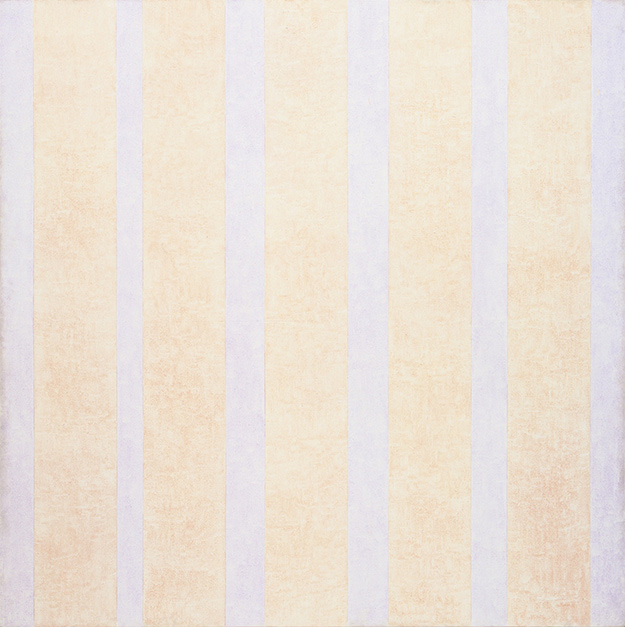 Agnes Martin, Untitled Number 5, 72 x 72 inches, 1975
Agnes Martin, Untitled Number 5, 72 x 72 inches, 1975
Painting doesn’t exist and artists don’t exist. In the process of life, only the response exists. For example, sun shines on your hand and you say, “This is a caress,” now that’s real. Reality has infinite expressions. Each winter day is different from any winter day that ever existed and every painting that is real is different. The art world depends on obedience and surrender.
—Agnes Martin
Agnes Martin was a complicated person, singular in many ways. She suffered from schizophrenia, and during the 1960s she was hospitalized several times. In one instance “at Manhattan’s then-notorious Bellevue Hospital, she was subjected to more than 100 electroshock treatments.” After living, painting, and teaching in various places including New York City, Martin gave up painting and moved to New Mexico for good in 1968. She began painting again in 1974. Although she was forbidden by her “voices” from owning land, she was able to make rental agreements with local landowners in New Mexico — first in Cuba, then later in Galisteo — which allowed her to build her own structures, including living quarters and studios. She had some help, but did much of the work herself, including making her own adobe bricks, digging a well, building a wind-powered generator, and building a 150-ft. windbreak from canvas, leather, and wood poles. She did keep ducks and chickens at various times, but her “voices” did not allow her to have a garden because it was a distraction. During her periods of sustained working, she did not allow herself external pleasures. She would limit her diet to bananas and coffee, or on one occasion, to bananas and Knox gelatin mixed into orange juice. At times, she slept in her unheated trailer even when the night temperature was below zero. She said, “I have absolutely no comfort now. But I don’t want it, all I want is a greater awareness of reality – joy and innocence.” Hers was a solitary, reclusive life. She didn’t want friends, and she rejected offers of help and friendship. She told her dealer, Arne Glimcher, about the importance of eliminating distractions. “Emptiness is what I want – zero when I’m painting and then eight hours later with no interruptions hopefully you’ve done some good painting. In Cuba, they’re scared to death of me. I tell them if they knock on my door, I’ll chop their heads off.” She was known to repaint a composition multiple times on fresh canvases until she was satisfied with it, deeming the others to have “mistakes” and finally destroying them with a box cutter. Much has been said about the link between schizophrenia and creativity, and I don’t want to get into that here. But one cannot help being mindful of this when considering Martin’s own words. At times they sound truly profound and insightful, and at other times somewhat alarming. Perhaps there is no separation there, when you think about it. I’ll leave you with some of her thoughts on life and art, from a 1982 draft of her artist statement for Contemporary Artists (Macmillan 1983): The enormous pitfall is devotion to oneself instead of to life. All works that are self devoted are absolutely ineffective. Even though they are often purchased by prideful people they are soon recognized as dead. Devotion to life is a feeling. Art work is made with this feeling and response to art work is exactly the same feeling. This feeling of devotion literally carries us through life, past all distractions and pitfalls to a perfect awareness of life, to measureless happiness and perfection. With no experience of real happiness, no conscious experience of devotion to life, one cannot be an artist. One must be lifted up, out of oneself, unconscious self, as in the contemplation of beauty. … The response to art work is unchanging even in thousands of years, proving that it is of life. [1] Agnes Martin: In Two New Books, A Life Revealed by by Edward M. Gómez, July 4, 2015(Note: my reference for all of the above is Agnes Martin: Paintings, Writings, Remembrances by Arne Glimcher.)
